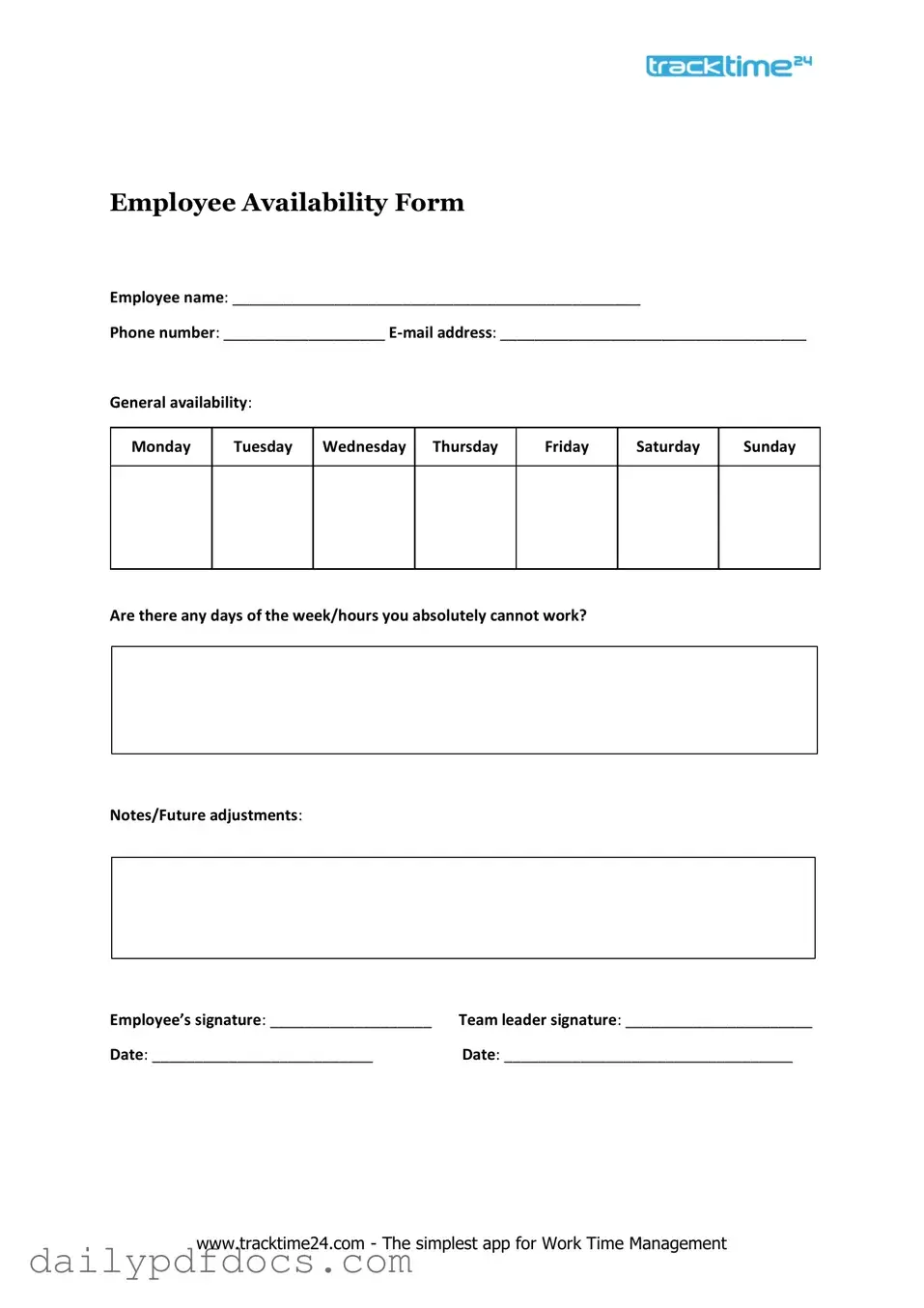What is the purpose of the Employee Availability form?
The Employee Availability form is designed to gather information from employees regarding their preferred working hours and days. This helps employers schedule shifts more effectively, ensuring that staffing needs align with employee availability. By understanding when employees can work, companies can create a more balanced and efficient work environment.
Who needs to fill out the Employee Availability form?
All employees, regardless of their position or department, should complete the Employee Availability form. This includes full-time, part-time, and temporary staff. By collecting availability from everyone, employers can ensure they have a comprehensive view of when all team members are available to work.
How often should I update my availability?
Employees should update their availability whenever there are significant changes in their schedules, such as a new class schedule, a second job, or personal commitments. Regular updates ensure that employers have the most accurate information to create schedules that work for everyone. It’s a good practice to review your availability at least once a month or whenever your circumstances change.
What if I have a fluctuating schedule?
If your availability changes frequently, it’s important to communicate this clearly on the form. You can indicate your typical availability and note any specific days or times when you are unavailable. Additionally, you might want to discuss your situation with your supervisor to ensure that your schedule can accommodate your needs.
Can I request specific days off on the form?
Yes, you can request specific days off on the Employee Availability form. There is usually a section where you can indicate any days or times when you are not available to work. Be sure to provide as much detail as possible so your employer can consider your requests when creating schedules.
What happens if I don’t submit the form?
If you do not submit the Employee Availability form, your employer may not have a clear understanding of your scheduling preferences. This could lead to conflicts or assignments that do not align with your availability. It’s in your best interest to complete the form to ensure that your work schedule meets your needs.
Is my availability information kept confidential?
Yes, your availability information is typically kept confidential and used solely for scheduling purposes. Employers understand the importance of privacy and will handle your information with care. If you have concerns about confidentiality, don’t hesitate to ask your HR department for clarification on their policies.

